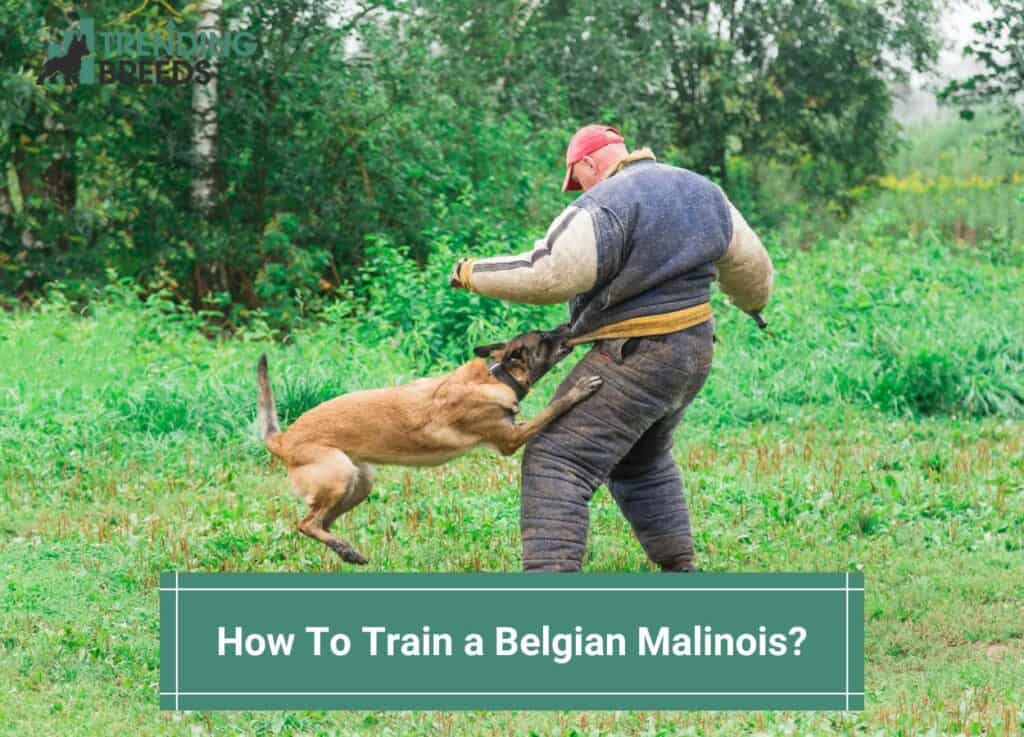
Fiercely loyal, athletic, and workaholic, the Belgian Malinois is one of the most versatile dog breeds in the world. They can be used for a wide range of activities, including narcotics detection, search and rescue, and agility competitions.
But this high level of trainability comes with a price – the Belgian Malinois requires a lot of training and attention from their owners. It isn’t going to be enough to bring home a Malinois puppy and expect it to instantly know what to do.
They are intelligent, adaptable dogs but all dogs need direction, and a Malinois most of all.
In this blog post, we’ll look more closely at what a Belgian Malinois is, how to train one, potential behavioral issues, and how to train some basic commands to your Malinois.
Other articles you would like: How To Train A Bernedoodle? and How To Train A Cattle Dog?
Table of Contents
For more information about the Belgian Malinois Training, check out the video below:
What Is A Belgian Malinois?

Belgian Malinois are one of the four types of Belgian Shepherd Dogs. Often mistaken for German Shepherds, they are slightly smaller in size with shorter coats.
They are very active and athletic dogs, bred for working roles such as herding sheep and guarding property.
Belgian Malinois are intelligent and easily trained, making them popular as police and military dogs. They are also loyal and protective of their family, although they can be shy around strangers.
Originally bred in Belgium in the late 19th century, the Belgian Malinois was first introduced to the United States in 1911. Since then, the breed has become increasingly popular, particularly among law enforcement and military units.
The Belgian Malinois is an intelligent and loyal dog that is eager to please its owner. It is also known for its high energy level and athletic ability.
With proper training, the Belgian Malinois can make an excellent companion as well as a formidable working dog.
What Is The Temperament Of A Belgian Malinois Like?
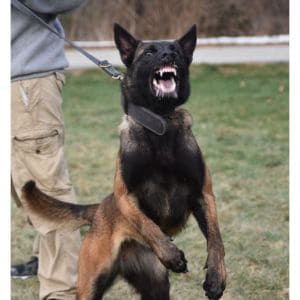
The Belgian Malinois is a strong, powerful breed with a superb working dog drive. Known for its incredible work ethics, Belgian Malinois are prized for their ability to follow commands and stay focused on tasks.
They are also highly trainable, which makes them a popular choice for families looking for an obedient pet.
In addition to their working dog temperament, Belgian Malinois are also fun-loving and affectionate dogs that enjoy spending time with their human companions.
However, an unsocialized, unhappy Malinois can be an absolute nightmare to themselves and to others. They can be highly suspicious of strangers, fearful, even aggressive.
It is critical to socialize and train a Belgian Malinois. When properly bonded to their owners, they can be fiercely loyal and protective, and completely devoted to their families.
In addition, they have high energy levels and being a herding breed, a high prey drive. They are likely to chase smaller animals and pets and will require a fenced in yard and to be on the leash at all times.
The Need For Early Socialization
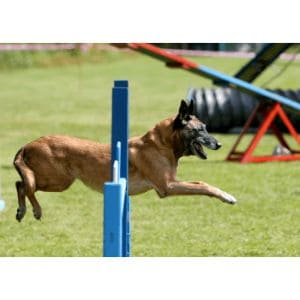
Dogs are social animals, and as such, they need regular interaction with other dogs in order to stay happy and healthy. Unfortunately, many dog owners mistakenly believe that their Belgian Malinois can get all the socialization they need from them.
While it’s true that you are your dog’s best friend, they still need to interact with other dogs on a regular basis. Socializing your dog helps them to stay well-rounded, and it also allows them to burn off excess energy.
In addition, socializing your dog can help to prevent behavioral problems from developing. If you want your dog to be happy and well-adjusted, make sure to provide them with plenty of opportunities to socialize with other dogs and situations.
A well-socialized dog is a happy dog, and exposing your furry friend to new people, places, and experiences is an important part of socialization.
By providing your dog with opportunities to explore the world around them, you can help them to develop confidence and to learn how to interact with other animals and people.
In addition, socialization can help to prevent behavior problems from developing, as dogs who are comfortable in a variety of situations are less likely to become anxious or aggressive.
How To Socialize A Belgian Malinois?

Socialization must start as early as possible. If your Malinois is still a puppy, it starts when they are fully vaccinated and can interact with other dogs safely.
Belgian Malinois are often used as working dogs, which means they are bred for their intelligence and athleticism.
But even the most intelligent dog can benefit from some basic obedience training. And since Malinois are such high-energy dogs, it’s important to give them plenty of exercise.
Here are some other ideas on exposing your Malinois to different environments.
- A good way to socialize a Malinois is to enroll them in an obedience class. This will help them learn basic commands and manners, as well as meet other dogs and get used to obeying commands in places other than at home.
- It’s also important to take your dog for walks and runs on a regular basis.
- Bring your dog to doggy daycare or a dog park where they can play with other dogs.
- Invite friends and family over to your house so your dog can meet new people in a comfortable setting.
- Give your dog opportunities to socialize with other animals, such as by taking them to a pet store or visiting a friend who has pets.
- Take them to everywhere you can where dogs are allowed, like a cafe or a grocery store to expose them to all kinds of situations.
By following these tips, you can help your dog become more comfortable and confident around other dogs and people. This will make for a happier, healthier pet that can enjoy a fuller life.
How To Train A Belgian Malinois?

Training should start the moment you bring your new dog or puppy home. It doesn’t have to be a long, extensive training session, but it can be simply setting boundaries as to what your new pup can or cannot do.
As with all dogs, positive reinforcement methods work best with the Malinois.
Positive Reinforcement
One of the most important aspects of dog training is positive reinforcement. Positive reinforcement is a type of reinforcement that rewards a behavior in order to increase the likelihood of that behavior being repeated.
Common examples of positive reinforcement for dogs include treats, verbal praise, petting, and attention. While it may take some time and patience, using positive reinforcement is an effective way to train your dog and build a strong bond with them.
Training a dog requires patience, consistency, and the ability to read your dog’s body language. But above all else, it requires the use of positive reinforcement.
Positive reinforcement is the only way to train a dog because it encourages desired behaviours and discourages undesired behaviors by withholding the reward, not meting out punishment.
With positive reinforcement, you are constantly rewarding your dog for good behaviour, which means that they are more likely to repeat that behavior in the future.
On the other hand, negative reinforcement involves punishing your dog for bad behaviour, which only serves to make them afraid of you and less likely to behave in the way that you want them to.
Why Doesn’t Punishment Work?
Many people believe that the best way to train a dog is through punishment. However, this approach is actually ineffective and can even be harmful to your furry friend. Dogs are social animals who want nothing more than to please their pack leader.
When they are punished, they often don’t understand what they did wrong and can become fearful or anxious.
This can lead to behavioral problems such as aggression or chewing, especially in stubborn, potentially rebellious breeds like the Belgian Malinois.
Punishing a dog only addresses the outcome, not the cause. The cause of an undesired behavior has to be addressed before it can be altered into a desired one.
Potential Behavioral Problems Of The Belgian Malinois
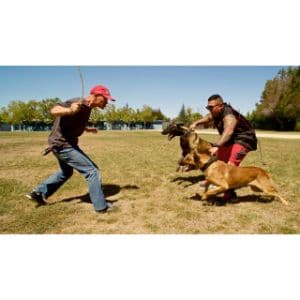
Like all dogs and puppies, when you bring one home for the first time, they will do a few things that don’t appeal to you so much! Here are some common behaviors exhibited by a Malinois that might get you on edge.
Jumping Up
A Malinois puppy jumping up on you might be adorable, but that pup will soon be at 60 lb adult Malinois and suddenly, it isn’t very funny anymore, especially if you have toddlers or seniors that are in the household or frequent visitors.
Dogs jump up on people for a variety of reasons. Sometimes they’re just excited to see you and want to show their affection. Other times, they may be trying to get your attention because they want something from you, like food or play.
Regardless of the reason, it’s important to be aware that this behavior can often be inconvenient or even dangerous, especially if the dog is large or jumps up unexpectedly. That’s why it’s important to train your dog not to jump up on people.
While it may be tempting to scold the dog or push them away, this will usually only increase their excitement and make the problem worse. Instead, it is important to stay calm and assertive. If the dog jumps up, simply turn your back and ignore them.
This will help them to understand that jumping is not an effective way to get your attention. Once they have calmed down, you can give them a treat or some affection.
With patience and consistency, most dogs will eventually learn to control their excitement and refrain from jumping up.
Puppy Biting
Even though a pup might be small and young, their bites hurt! Those razor-sharp puppy teeth seem to like getting into everything, including your hands.
Most puppies bite as a form of play. It’s their way of interacting with the world around them. If your puppy is biting as a form of play, it’s important to provide him with appropriate chew toys and to teach him not to bite people.
First, provide your puppy with plenty of chew toys and bones to gnaw on. This will help redirect their mouthy behavior. Second, don’t engage with your puppy when they mouth you- this includes pulling your hand away or pushing them away.
Instead, calmly walk away or ignore them until they stop mouthing. Finally, be consistent with your commands – if you allow your puppy to mouth you sometimes, they will become confused and won’t understand what behavior you’re truly trying to discourage.
With a little patience and consistency, you can teach your puppy not to mouth you and enjoy a peaceful relationship with your four-legged friend.
However, some puppies may also bite out of fear or aggression, especially in dominant breeds like the Belgian Malinois.
If a puppy is feeling scared or threatened, he may resort to biting as a way to defend himself. Puppies who bite out of aggression may be trying to assert their dominance over other animals or people.
If your puppy is biting out of fear or aggression, it’s important to seek professional help from a qualified trainer or behaviorist. With the right help, your puppy can learn to control his biting and live happily in your home.
Trying To Escape
The Belgian Malinois is a notorious escape artist, which is why many Malinois breeders and adoption centers always require potential owners to have a fenced-in yard. They have a high prey drive, and once they see a squirrel, it’s off to the races they go!
The easiest way to control your Malinois initially is to have a fenced yard with an extremely high fence. Malinois are athletic, agile dogs that have been known to easily clear a six-foot-tall fence. Also, when you are out, keep them on a leash at all times.
Malinois are high-energy dogs, so provide them with plenty of exercise so that they are happy to stick around with you at home and won’t constantly think about going off and chasing something.
Finally, provide your dog with plenty of toys and attention so that they don’t feel the need to escape in search of stimulation.
Chewing, Digging, And Excessive Barking
These destructive behaviors are simply signs of a bored, under-stimulated Malinois. They are highly intelligent, high-energy working dogs that need daily physical and mental stimulation.
Make sure your Malinois is getting enough exercise so that he is suitably tired at the end of the day. In addition, you can think about activities like flyball or agility classes to help him burn off all that excess energy.
Provide plenty of interactive dogs to keep that doggy brain working, and enroll in obedience classes or even more training classes like in search and rescue. Malinois are working dogs that need a job.
If you fail to keep them occupied enough or give them a job, they may well just give themselves one, like digging a hole in the center of the universe.
Separation Anxiety
If you’ve ever come home to find your dog frantically pacing and barking, you may have experienced firsthand the effects of separation anxiety.
Or if you have returned from work only to find your home in tatters and very irate neighbors complaining that your dog has been howling and barking all day.
This condition is characterized by a dog’s extreme distress at being separated from its owner. While it is most commonly seen in puppies, any dog can suffer from separation anxiety.
This condition is an extremely common one, and symptoms can range from mild anxiety, which is a whine or two when you are getting ready to leave, to a full-blown panic attack in which your dog can endanger itself.
It is common in breeds that are extremely bonded to owners, and while the Malinois is known to be an independent breed, they are incredibly attached to their owners which will make them prone to separation anxiety.
If your dog is showing signs of separation anxiety, the best thing you can do is consult with your veterinarian or a professional trainer.
They will be able to give you specific advice based on your dog’s individual needs. In the meantime, there are a few things you can do to help ease your dog’s anxiety.
First, try to create a calm environment when you leave the house. This means avoiding anything that might trigger their anxiety, such as loud noises or abrupt movements.
You should also make sure to give them plenty of exercise before you leave so that they are tired and relaxed when you go.
Finally, it is important to be consistent with your comings and goings. Dogs thrive on routine, so sticking to a regular schedule will help to reduce their anxiety.
When in doubt, always consult with a professional. If left unchecked, mild separation anxiety can escalate and result in a behavioral problem that is difficult to manage.
Training Some Basic Commands
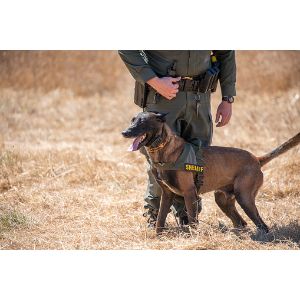
Now that you’ve got the foundation on how to manage a Belgian Malinois’ training. Let’s look at some very basic commands.
Recall, or “Come”
One of the most important commands you can teach your dog is “come.” Not only is this a useful command for recalls when your dog is off-leash, but it can also be helpful for keeping your dog safe in an emergency situation.
A well-trained “come” can help you quickly get your dog out of harms way before they have a chance to get hurt. As such, it is well worth taking the time to train your dog to respond consistently to the “come” command.
Assuming you have already established some basic obedience with your dog, teaching them to come when called (recall) is relatively easy – and it’s an important skill for every dog to know.
Start by practicing in a quiet room with few distractions. Once your dog is responding well, begin adding distractions like food or toys. It’s also helpful to practice in different locations with different levels of distraction.
Sit
One of the most basic commands that every dog should learn is “sit.” Not only is this a cue that is used frequently, but it also lays the foundation for other commands such as “stay” and “down.”
In addition, teaching a dog to sit can be a useful tool for managing canine behavior.
For example, if a dog is jumping up on people or getting too excited, asking him to sit can help to calm him down. Sit is also a cue that can be used in emergency situations, such as when a dog is about to cross a busy street.
Thankfully, training the “sit” is remarkably easy and a breed as smart as the Belgian Malinois will get this in a heartbeat.
- Get your dog’s attention. Before you can start training, you need to get your dog’s attention. Try calling his name or offering him a treat so he knows you’re talking to him.
- Get in front of your dog. Once you have his attention, stand in front of him or kneel down so you’re at his level. This will help him focus on you.
- Hold a treat close to his nose. Dogs love food, so holding a treat close to his nose will definitely get his attention!
- Say the command “sit.” Once he’s focused on the treat, say the command “sit” in a clear voice.
- Move the treat back towards his tail. As he follows the treat with his nose, he should naturally start to sit down. Once his bottom touches the ground, give him the treat and praise him enthusiastically!
- Repeat, repeat, repeat! The key to successful training is repetition, so be patient and keep practicing until your dog gets it right and will do it without food.
Conclusion For “How To Train a Belgian Malinois?”
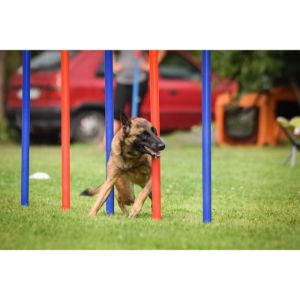
All dogs should have some form of training, but training a Belgian Malinois is a must. It can be incredibly rewarding or frustrating, so the key to any successfully trained Malinois is patience, consistency, and a ton of treats!
Dog training is a journey rather than a destination, so we hope you enjoy yours!
You will also like:




